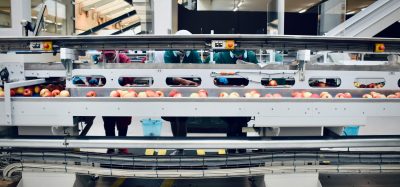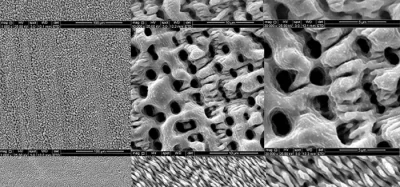An Achilles’ heel for hygiene
- Like
- Digg
- Del
- Tumblr
- VKontakte
- Buffer
- Love This
- Odnoklassniki
- Meneame
- Blogger
- Amazon
- Yahoo Mail
- Gmail
- AOL
- Newsvine
- HackerNews
- Evernote
- MySpace
- Mail.ru
- Viadeo
- Line
- Comments
- Yummly
- SMS
- Viber
- Telegram
- Subscribe
- Skype
- Facebook Messenger
- Kakao
- LiveJournal
- Yammer
- Edgar
- Fintel
- Mix
- Instapaper
- Copy Link
Posted: 6 November 2006 | Bo Knudsen, Segment Manager, Alfa Laval Tank Equipment A/S | No comments yet
When deciding which tank cleaning equipment to purchase, it is important to consider hygiene along with criteria such as effectiveness and price. The very first EHEDG-certified rotary jet head is now on the market.
Cleaning-in-place (CIP) based on tank cleaning equipment is finding its way into increasing numbers of reactors, tanks and processing vessels all over the world, in the food and dairy industries, pharmaceuticals and biotechnology.
When deciding which tank cleaning equipment to purchase, it is important to consider hygiene along with criteria such as effectiveness and price. The very first EHEDG-certified rotary jet head is now on the market. Cleaning-in-place (CIP) based on tank cleaning equipment is finding its way into increasing numbers of reactors, tanks and processing vessels all over the world, in the food and dairy industries, pharmaceuticals and biotechnology.
When deciding which tank cleaning equipment to purchase, it is important to consider hygiene along with criteria such as effectiveness and price. The very first EHEDG-certified rotary jet head is now on the market.
Cleaning-in-place (CIP) based on tank cleaning equipment is finding its way into increasing numbers of reactors, tanks and processing vessels all over the world, in the food and dairy industries, pharmaceuticals and biotechnology.
At the same time, industry recognises that business success is also related to the strategic importance of production hygiene and product safety.
Making sure that tank cleaning equipment, apart from being efficient and cost-effective, does not itself compromise product hygiene via its basic design and construction then becomes an important new element in the never-ending effort to optimise production performance.
Tank cleaning equipment
Companies usually choose CIP procedures that feature tank cleaning machines in order to achieve economical, repeatable and efficient cleaning. Such tank cleaning equipment is permanently mounted in the tank and can be activated on demand, e.g. after every emptying of the tank.
Comparisons have shown that CIP using tank cleaning machines provides good overall results compared with other cleaning methods. The advantages of CIP include high-quality cleaning, increased productivity due to reduced downtime and elimination of the risks and hazards associated with manual cleaning.
The CIP tank cleaning process comprises distributing hot or cold water over the inside surfaces of the tank to remove product residues, followed by the application of cleaning detergents. The parameters that are important for the cleaning effect are pressure, temperature, spray pattern, type of detergent and cleaning time.
Many types of tank cleaning equipment based on different principles are available on the global market. Static and rotary spray heads both exist in different versions, such as spray balls (stainless steel or Teflon/PVDF), jet nozzles, spiral washing devices, disc washers and spinners. All of these feature specific advantages and disadvantages.
The hygiene of cleaning equipment
Mounting tank cleaning equipment permanently in full product contact should give rise to important hygienic considerations about draining of the equipment, the materials used, lubricants, gaskets, joints and construction details in general.
Unlike the smooth surface of the tank itself, the cleaning equipment – with its complex geometry, nozzles and moving parts – may be very difficult to clean. During production, the tank content will find its way into the actual cleaning equipment, making the task of keeping it clean extremely difficult.
This means that the tank cleaning equipment itself may actually be the Achilles’ heel of the overall tank hygiene set-up, although this fact is often overlooked.
When deciding which tank cleaning equipment to purchase, it is therefore important to consider the hygienic design of the equipment, along with other more traditional criteria such as efficiency in terms of both cleaning effect, operating costs and purchase price.
Hygiene certification of tank cleaning machines
The hygienic design of food production equipment has been an issue for several years. The EHEDG, in particular, is very active in establishing design guidelines as well as equipment approval through third-party certification in order to assist both equipment suppliers and food manufacturers.
The Danish company Alfa Laval Tank Equipment A/S considers tank cleaning as an integral part of the production line. By optimising every stage of the cleaning process, it is possible to have a significant positive impact on overall plant output.
In 2005 the company presented the first rotary jet head for tank cleaning certified by the EHEDG – the Toftejorg SaniJet 25. This is designed, tested and approved in accordance with relevant EHEDG guidelines.
This model is a rotary jet head for tanks with volumes from 15 to 200 cubic metres. The rotary jet head cleans tanks by indexing a high-impact jet of cleaning media against the tank walls to ensure complete coverage of all tank surfaces. The design is particularly suitable for applications characterised by ultra-hygienic requirements.
The flow of detergent through the rotary jet head’s turbine and gears causes the nozzles to perform rotations around the vertical and horizontal axes, generating a criss-cross spray pattern inside the tank.
Toftejorg SaniJet 25 is designed in accordance with EHEDG Doc. 8 ‘Hygienic equipment design criteria’. This describes the criteria for the hygienic design of equipment intended for the processing of foods. Its fundamental objective is the prevention of microbial contamination of food products.
Ultra hygiene – and peace of mind
After implementation of improvements determined after an initial design review, the rotary jet head was tested for self-cleanability in accordance with EHEDG Doc. 2 ‘A method for the assessment of in-place cleanability of food processing equipment’. This test procedure, conducted at the Danish Technological Institute (DTI), is designed to indicate areas of poor hygienic design resulting in product residues or micro-organisms being protected from the cleaning process.
DTI also certified compliance with EHEDG Doc. 5 ‘A method for the assessment of in-line steam sterilisability of food processing equipment’.
This means that the Toftejorg Sanijet 25 is currently the only tank cleaning solution that meets hygienic cleaning criteria based on third-party EHEDG certification. With correct use and maintenance, production performance can be significantly optimised.
Other products will follow in the wake of the Toftejorg SaniJet 25. Alfa Laval Tank Equipment A/S has decided that the company’s full range of tank cleaning equipment will be EHEDG-certified in future.
Brewing beer and ale requires optimum cleaning of fermenters. Toftejorg SaniJet 25 also provides the brewer with peace of mind, based on third-party EHEDG hygiene certification.









